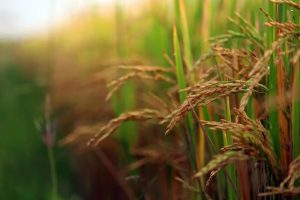WTO scrutiny will prevent a big hike in farm subsidies by govt, but fixing markets is a far more efficient solution anyway.
If anyone thought the government could double farmers’ income by 2022—a Narendra Modi promise—with a sharp hike in farm subsidies or in PM Kisan-type income transfer schemes, they just need to look at the global reaction to the government’s plan to spend Rs 25 lakh crore on agriculture and rural development to know this is impossible. As FE reported a few days ago after the government announced its Rs 25-lakh-cr plan, a host of countries have begun asking whether or not this will affect India’s WTO commitments that put a cap on how many farms support the government can give. Since the WTO principle is that government policy shouldn’t distort export markets, the US has, for instance, asked what step India is taking to ensure its large wheat stocks won’t distort global markets. Thanks to the high MSPs fixed by the government, FCI accumulates stocks far over what is needed and, to clear them, FCI usually sells them at a discount later; to the extent the stock is bought by traders who export it, this gets counted as distorting export markets through subsidies. Right now, India has breached WTO norms of 10% subsidy/support in crops like wheat and rice. It is true, as Icrier professors Anwarul Hoda and Ashok Gulati point out, that the WTO is not taken into account inflation since the agreement was signed—once this is done, India’s support levels fall dramatically, from 26%, in the case of rice, to 2.9% (bit.ly/2XiVNgL), but till the WTO accepts India’s interpretation, the argument is moot.
Fortunately, increasing subsidies—such as those on MSP-based procurement—is not the only way to boost farmer income, and that is why Modi’s Rs 25 lakh crore plan can coexist with India’s WTO commitments. Public capital formation in agriculture fell from 3.9% of agri-GDP in 1980-81 to 2.2% in 2014-15, before recovering a bit to 2.6% in 2015-16 while, at the same time, input subsidies rose from 2.8% to 8%. So, if Modi were to switch expenditure from subsidies towards investment, that would help raise farmer incomes while not affecting the WTO equation. According to Gulati, every rupee spent on agricultural R&D adds Rs 11.2 to agriculture GDP while the same amount spent on roads adds a much smaller Rs 1.1; and just 88 paise gets added if the money is spent on fertilizer subsidy. That means if the government spends on R&D and on roads instead of on various input subsidies, doubling farmers’ income while staying WTO-compliant will not prove difficult since such spending is in the ‘Green box’. And while India hardly has much of a government R&D budget, a friendly policy towards seed tech firms like Monsanto, as opposed to today’s outright hostility, would boost productivity without any extra government investment. RELATED NEWS
, according to an ICRIER-OECD study on agricultural policies in India, by not allowing farmers to get global prices, India taxed its farmers by 14% (of gross farm receipts) for the years 2000-01 to 2016-17. For the entire period, that means farmers lost Rs 45 lakh crore (at 2017-18 prices), or around Rs 2.6 lakh crore per year. While this is why Modi has been trying to push the pan-India electronic or eNAM market, it has not been successful; but were a successful attempt to be made, farmers can get 10-14% more income right away. The other advantage of supporting farmers the smart way is that if, for instance, subsidies aren’t given on water and electricity—and MSP is not used to dictate what farmers grow—this will also ensure farmers don’t grow the wrong crop; as a result, with less damage to the soil, overall productivity will rise. Agriculture reform is a big agenda item for the government, and, if is done right, the impact on farmers and the economy will be huge.



